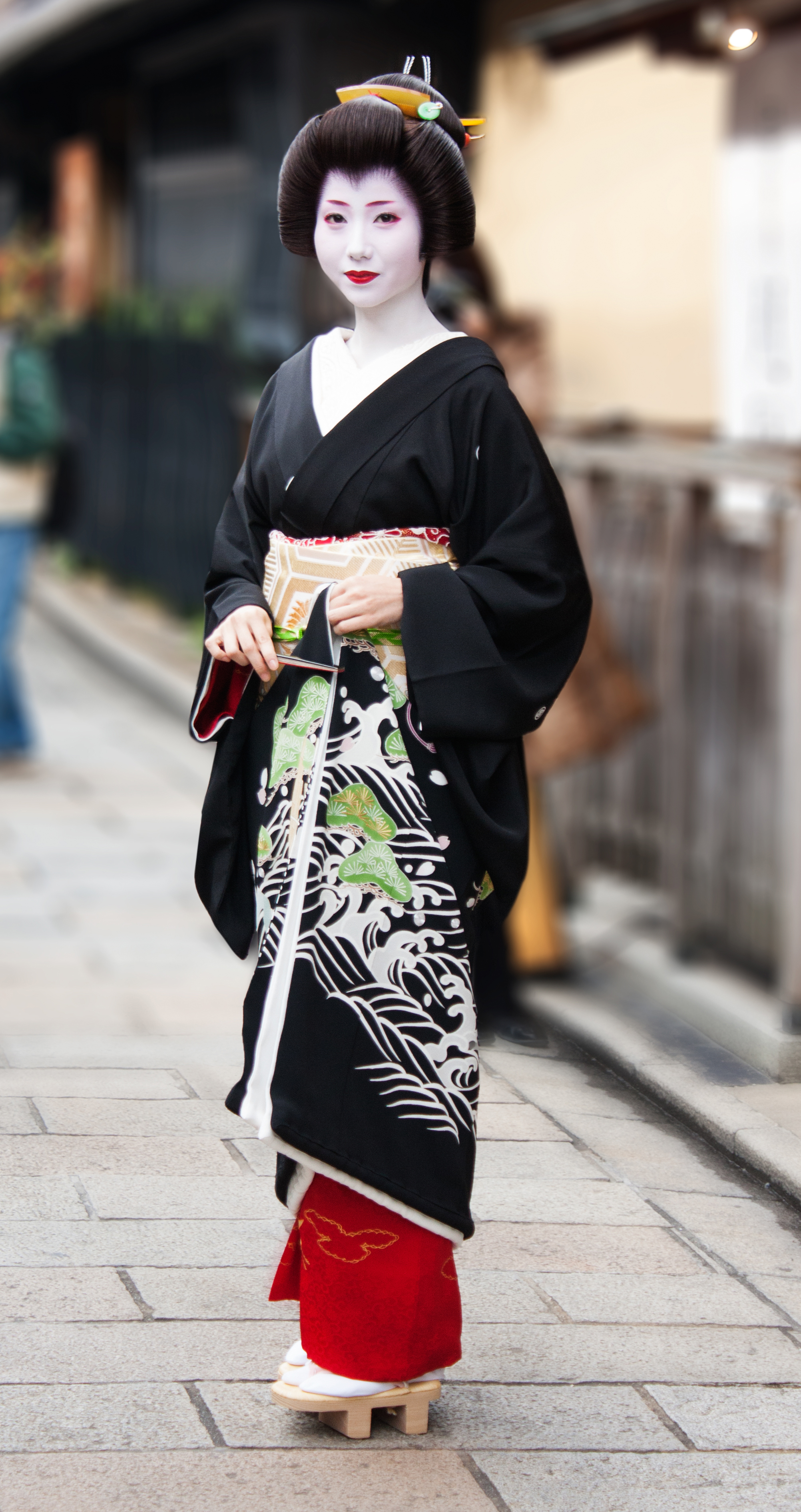Geisha is a Japanese woman trained to entertain men. Geisha receive formal training in many traditional Japanese arts and in hospitality. They entertain guests during meals or special occasions. Geisha are known for the artistry of their dance and music and for their skill in conversation. Geisha are sometimes called geiko, usually when referring to geisha from Kyoto.

Geisha wear a simple, colorful silk gown called a kimono and an obi (sash). Professional geisha usually wear expertly crafted wigs decorated with ornamental combs. Geisha wear white makeup on the face and neck. Black and red makeup are also applied to the eyelids and eyebrows. The geisha’s lips are painted a bright red, which stands out against the white makeup.
The word geisha translates as person of the arts. Geisha are trained in flower arrangement, tea ceremonies, dancing, singing, and playing such instruments as the three-stringed samisen, or shamisen. They are also renowned for their conversational skills and formal manners.
Apprentice geisha, usually under 21 years old, are called maiko. Maiko train for five years in a female-only lodge called an okiya. Maiko wear brighter and more decorated kimonos than trained geisha, along with a red collar. They also wear more hairpins and ornaments in their hair. Maiko accompany trained geisha to learn skills and assist with ceremonies. They are promoted to professional geisha with a white collar in a ceremony called erikae.
Geisha originated in the pleasure quarters of large Japanese cities in the 1700’s. These areas allowed licensed prostitution. The first geisha were men who entertained patrons of courtesans, upper-class prostitutes. Geisha became widespread in Japan around 1730. Women began taking over the role around 1750.
A registration office known as the Kemban was created to differentiate geisha from prostitutes, regulate their pay, and handle legal issues. The role of the geisha was seen as a formal profession by the early 1800’s. Geisha entertained politicians and business leaders. Historians estimate that as many as 80,000 geisha were working in the early 1900’s. The profession began to decline before World War II (1939-1945). Very few professional geisha work in Japan today.
